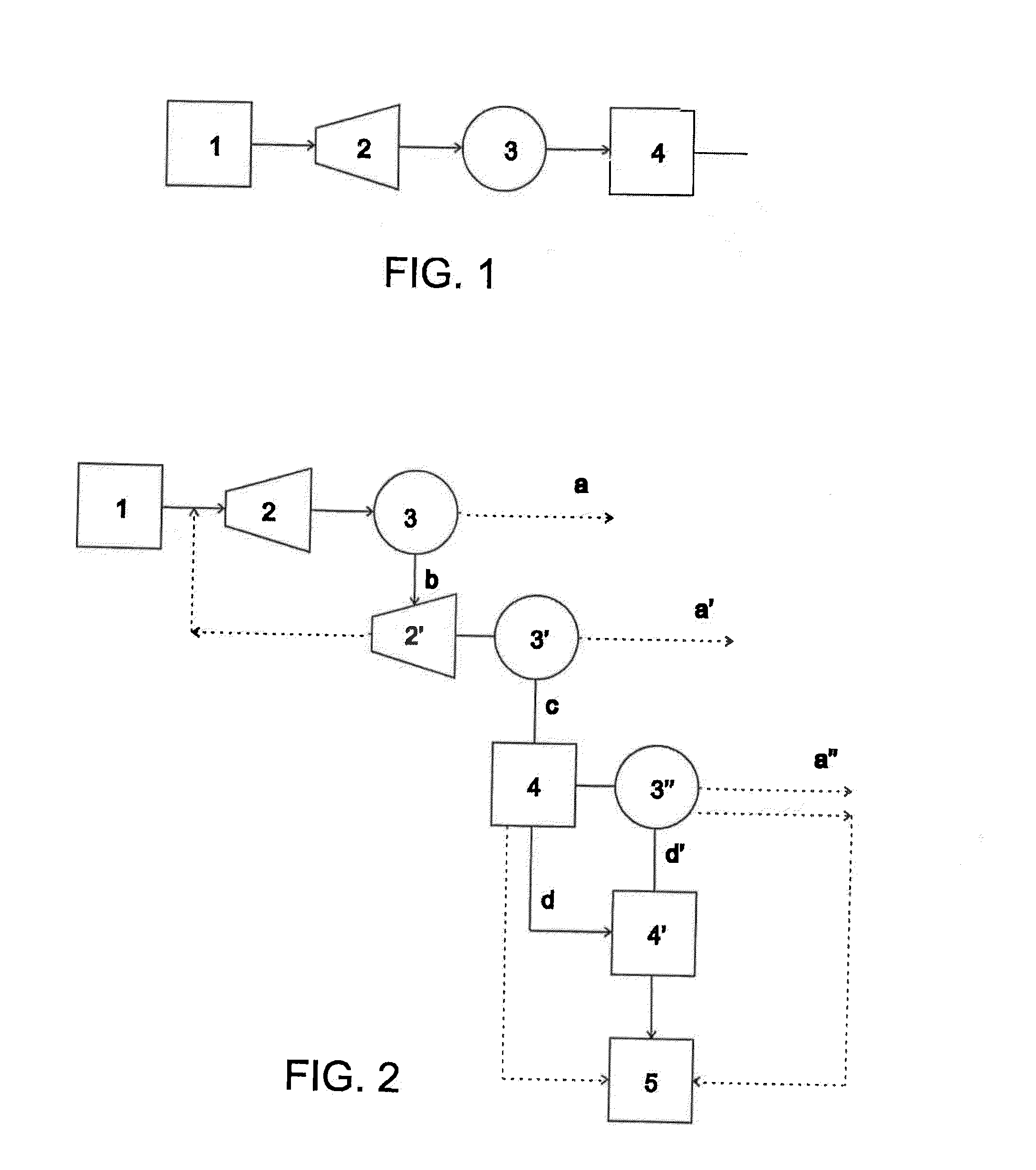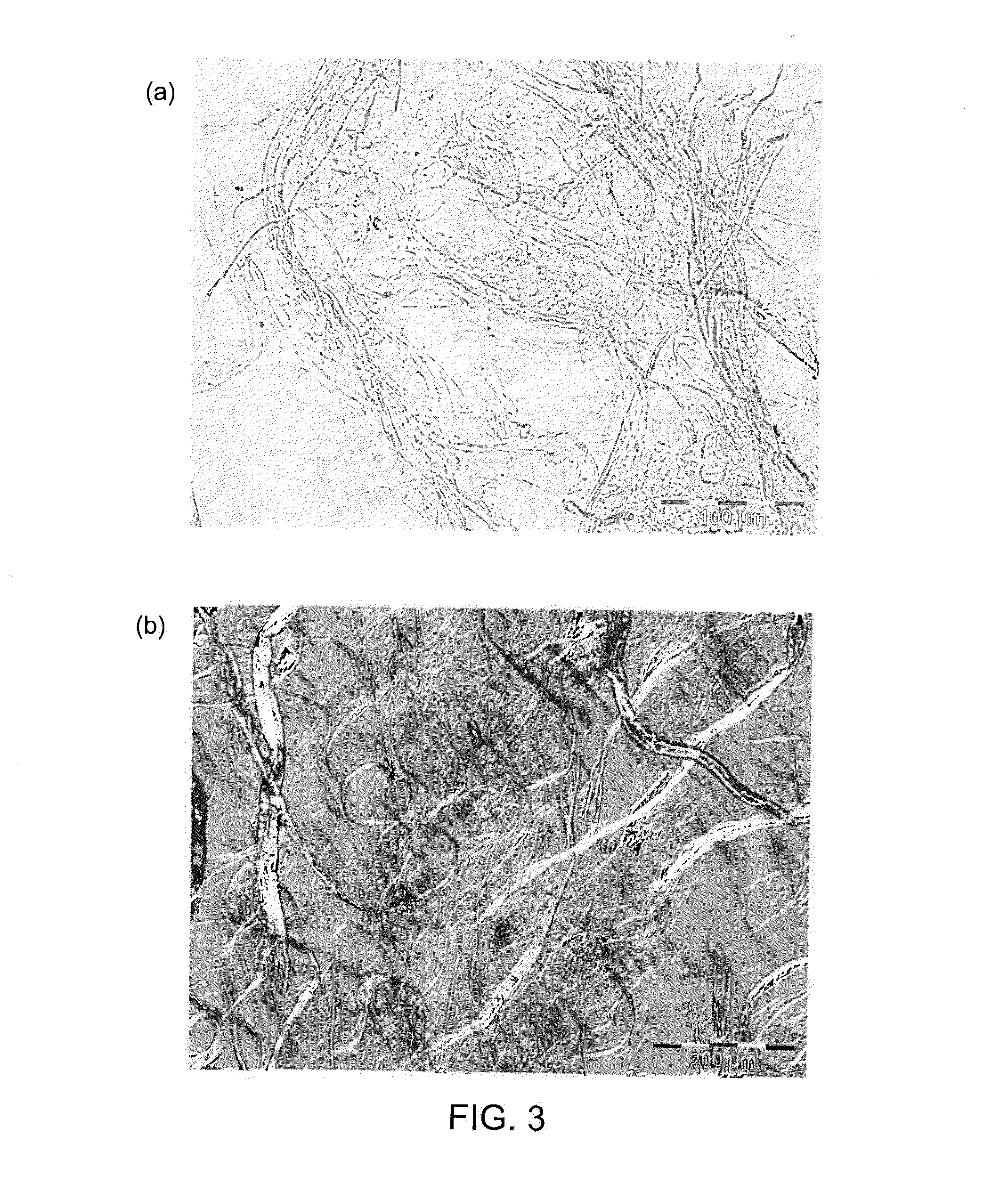Method of producing microfibrillated cellulose
a technology of cellulose and microfibrillation, which is applied in the direction of non-fibrous pulp addition, microorganism/enzyme addition, papermaking, etc., can solve the problems of loss of yield, large amount of energy consumed for continued fibrillation, and degradation of cellulose fibrils, so as to achieve high aspect ratio mfc, less fiber cutting, and better mechanical properties
- Summary
- Abstract
- Description
- Claims
- Application Information
AI Technical Summary
Benefits of technology
Problems solved by technology
Method used
Image
Examples
example
[0068]Never dried pine kraft pulp having consistency of about 4 wt-% was fibrillated using conical refiner to drainage resistance SR of 90 (about 0 as CSF).The resulting pulp was subjected to dewatering until consistency of about 35 wt-%. The pulp was then diluted to consistency of 25 wt-% and then refined 2 to 3 times with high consistency disk refiner.
[0069]The resulting suspension was visually evaluated using a light microscope. It was noted that resulting suspension is essentially homogenous and fibrils have high aspect ratio. Result is shown as FIGS. 3a and 3b.
[0070]Obtained high aspect ratio MFC was used in pilot paper machine and compared to typical MFC. The stock consisted of 70% bleached birch and 30 bleached pine refined to 23-26 SR. Amount of MFC used was 25 kg / t. It was surprisingly found that dewatering of high aspect ratio MFC was easier compared to normal MFC. In addition samples containing high aspect ratio MFC had, when compared to normal MFC, improved tear strengt...
PUM
| Property | Measurement | Unit |
|---|---|---|
| Fraction | aaaaa | aaaaa |
| Fraction | aaaaa | aaaaa |
| Fraction | aaaaa | aaaaa |
Abstract
Description
Claims
Application Information
 Login to View More
Login to View More - R&D
- Intellectual Property
- Life Sciences
- Materials
- Tech Scout
- Unparalleled Data Quality
- Higher Quality Content
- 60% Fewer Hallucinations
Browse by: Latest US Patents, China's latest patents, Technical Efficacy Thesaurus, Application Domain, Technology Topic, Popular Technical Reports.
© 2025 PatSnap. All rights reserved.Legal|Privacy policy|Modern Slavery Act Transparency Statement|Sitemap|About US| Contact US: help@patsnap.com


